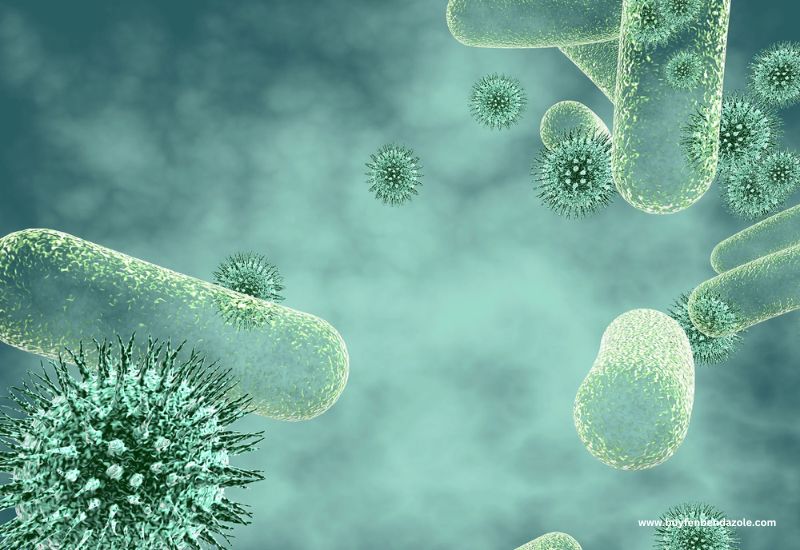The 1918 flu pandemic led to the deaths of more than three percent of the world population or 50 million people. The flu virus wasn’t the primary cause of many of the deaths.
Analyzing lung samples collected during the influenza pandemic showed that the majority of deaths were caused by pneumonia caused by bacteria. In recent times like in the 2005 HTML2 as well as the 2009 H1N1 flu pandemic which resulted in the death of around 18% of the victims who had viral pneumonia, infections with bacteria increased the risk of dying. In the case of COVID-19, the COVID-19 pandemic is without exception.
As the flu season begins, and with the ongoing COVID-19 pandemic, it is vital to minimize the deaths and illnesses that are caused by the viruses. The majority of deaths caused by COVID-19 and the flu are not caused by the virus. It’s usually an additional bacterial infection that is the cause of numerous of devastating effects which can be linked to an initial virus. fenbendazole for humans, albendazole 400 mg buy online could reduce the effect of COVID-19.
My name is an immunologist, and I research why and how cells die through bacterial and viral infections. It is essential to know what interactions microbes have with each other to recognize and cure current pandemics as and prevent their occurrence in the future. My coworkers and I have published research that revealed the importance of an immune system protein that is essential in fighting off viruses. It also plays a crucial part in fighting bacteria.
Read more:-
Bacteria And Viruses Team Up
Multiple pathogens can cause multiple infections. Scientists distinguish each type of pathogen according to the time each infection was triggered. The mixture of more than one pathogen may create an infection. Superinfections and secondary infections are the resulting diseases that follow an infection that started. These infections are typically caused by pathogens that are resistant to the antibiotics that were prescribed to treat the first infection.
The danger of suffering from bacterial and viral infections is increased when they coexist. Infections with respiratory viruses can cause the deterioration of the illness and also increase the likelihood of developing bacteria-related infections. This can be caused by a variety of factors.
The epithelial cells which line your lungs and the airways that line your respiratory tract act as your primary defense against pathogens and harmful substances. Viral infections can damage the cells and permit bacteria to invade the lung. They alter the epithelial cell surface so that bacteria can stick to the cell.
In addition, viral infections can affect the epithelial and immune cells by reducing the number of receptors that aid these cells detect pathogens and initiate an immune response. This implies that fewer immune cells can report the location of infection to the bacteria, opening the way to the possibility of new infections.
Influenza, Covid-19, And Bacterial Infections
Patients suffering from bacterial infections and seasonal influenza are more likely to end up in the hospital. About 25% of the severely ill people admitted to the ICU suffer from a bacterial infection. An analysis of the flu season 2010-2018 revealed that more than 20% of the flu-related pneumonia patients admitted to hospitals were suffering from bacteria-related infections.
A follow-up study on patients suffering from bacterial or viral infections found that more than half had been affected by another pathogen. Patients who had multiple infections had more than double the chance of dying within 30 days than patients who were suffering from one illness.
It is fascinating to consider that two of the prevalent bacterial strains in flu virus-related coinfections include Streptococcus pneumophile and Staphylococcus Aureus. They are found inside the respiratory tract, however, they don’t cause illness. The influenza virus may result in damage to cell membranes of the lung, which can impair immune function and make people more vulnerable to infections.
Secondary bacterial infections are also a contributor to the COVID-19 outbreak. According to a review of 2021 16% to 28% of COVID-19-infected adults also suffered from an infection caused by bacteria. Patients suffering from COVID-19 were required to be hospitalized for twice as long, needed 4 times the amount of mechanical ventilatory as well at a three-fold higher risk with COVID-19 to pass away.
Secondary And Coinfections Should Be Addressed
The immune system responds in different ways when it comes to viruses and bacteria. Antivirals aren’t effective against bacteria, and antibiotics will not have the ability to fight viruses. To combat secondary infections and other diseases it is crucial to know the mechanisms the body utilizes to regulate antiviral as well as antibiotic-resistant infections.
The researchers I work with might have an idea. To determine the proteins in cells that were destroyed or shielded from bacteria We sequenced the DNA of macrophages, which is one type of immune cell.
We identified Z DNA binding protein (ZBP1). This molecule has been identified to regulate how the immune system reacts to influenza. ZBP1 is one of the molecules that detect that there is an influenza virus in the lung. It triggers epithelial cells and immune cells to cease self-destructing. This results in cell death, and also encourages the migration of immune cells to the area.








